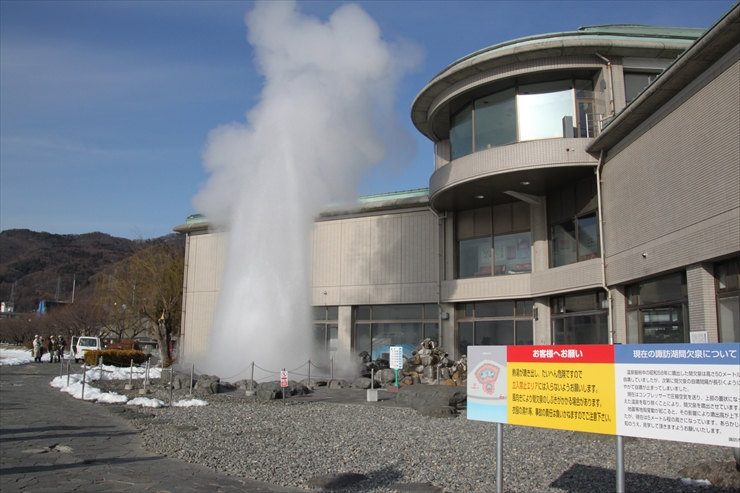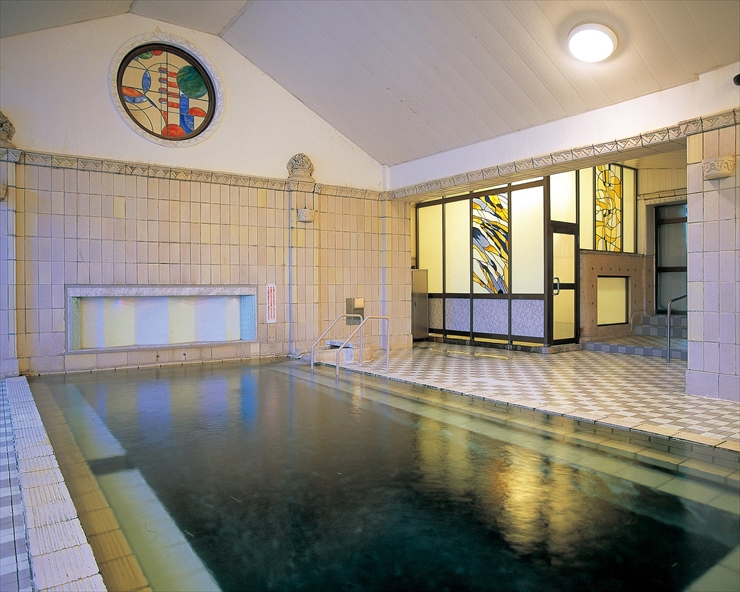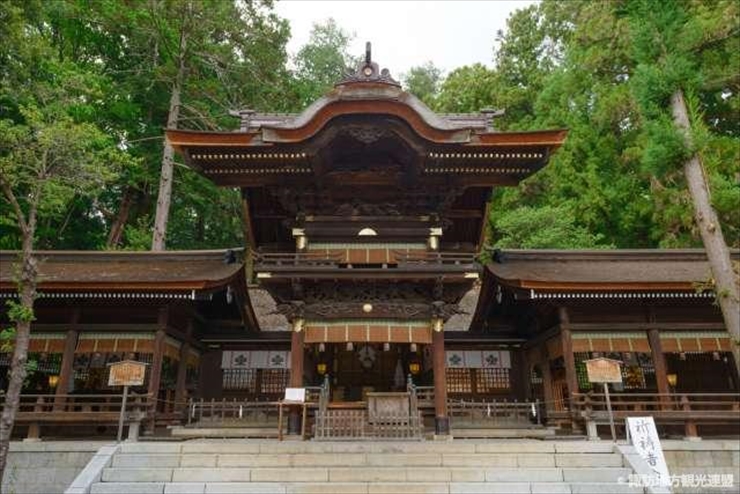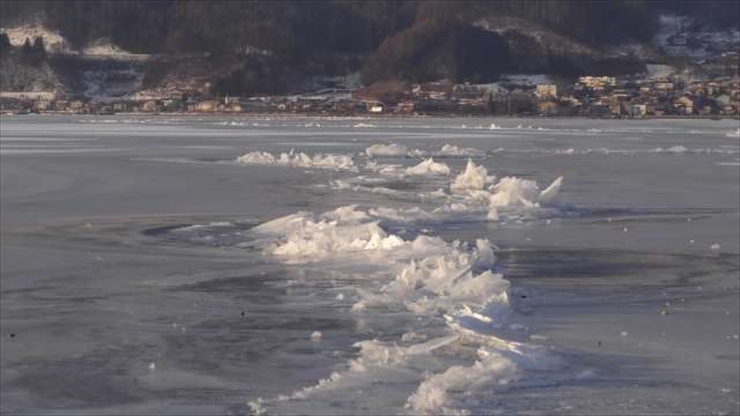Kami-Suwa Onsen
A lakeside onsen town for the sophisticated traveler

Located in the central part of Nagano Prefecture, Kami-Suwa Onsen town spreads out along the eastern side of Lake Suwa, the prefecture’s largest lake with a perimeter of 16 kilometers. Situated near Lake Suwa is Suwa Taisha (Suwa Grand Shrine), a complex composed of four shrines grouped into two sites. To shrine-goers, Kami-Suwa Onsen has long been known as a destination for those seeking comfort and relaxation.
Renowned as one of the nation’s most abundant hot springs, Kami-Suwa Onsen is a simple hot spring that is mildly to moderately alkaline. The mild quality of the water is said to be beneficial for the skin, as well as recovery from fatigue and stress.
One of the allures of Kami-Suwa Onsen is the fact that there are many ways to appreciate the hot springs. You can see geysers shooting up as high as five meters at the Lake Suwa Geyser Center, or try your hand at making onsen tamago (eggs cooked in hot spring water), experiencing nature’s grandeur and enjoying all that it has to offer. Those who prefer a more casual outing have the option of trying out the foot bath at the Suwa Lakeside Park. There is no entrance fee, and you can take in the scenery of Lake Suwa while keeping warm in the soothing foot bath. There is also a foot bath right on the platform of the JR Kami-Suwa Station, as well as the Jinguji Foot Bath in front of the Suwa City Museum located near the Suwa Taisha Upper Main Shrine. Additionally, in December 2020 a “hand bath” was built where visitors can dip their hands in onsen, making it even easier to enjoy than a foot bath. The steam rising from the hot springs is sure to add another layer to the atmosphere of the onsen town.
Katakurakan (Nationally Designated Important Cultural Property), Japan’s oldest bath facility, is also a must-see. A Western-style building built in 1928 by the Katakura Zaibatsu business syndicates that thrived in the silk industry, it has a main bath made from marble known as “Sennin-buro” (thousand people bath). It is open to bathe in still now during the daytime. If you do go for a soak, make sure to revel in the lavish decor of stained-glass windows and sculptures.
As a historic onsen area, there are numerous ryokan (traditional Japanese inns) and hotels in Kami-Suwa Onsen town for visitors to wind down in. After spending a day walking or riding a bike around Lake Suwa, you can take a dip in the onsen and devour delicious food and local sake made in Nagano Prefecture, where nature is lush. You might say it is an ideal destination for the sophisticated traveler.

Lake Suwa Geyser Center

Katakurakan Bath Facility (Nationally Designated Important Cultural Property)

With a depth of 1.1 meters, the “Sennin-buro” (thousand people bath) is a unique bath enjoyed standing up.

Jinguji Foot Bath

Composed of four shrines located around Lake Suwa, Suwa Taisha is best visited while staying at Kami-Suwa Onsen. The impressive shrine is rich in atmosphere with over 1,000 years of religious history.

“Omiwatari” (“The Passage of the Gods”), a natural winter phenomenon where the frozen surface of Lake Suwa rises up like a mountain range. It is revered as the tracks of the Suwa Taisha gods, and the cracks in the ice are deciphered as part of a divination practice to predict the year’s harvest.
From the Editor
Using high-quality groundwater taken from the Kirigamine Plateau, Japanese sakes brewed in Suwa are some of the best in Japan. There are five sake breweries, and you can compare each one to find your favorite. Mine is Masumi!
| Area |
|
| Access | Tokyo Station → 2.5 hours by Limited Express Azusa → Kami-Suwa Station |
| Phone | Suwa Tourist Information Center
TEL:0266-58-0120 |
| URL | https://www.suwakanko.jp/en/ |
※ The information herein is as of April 2021









